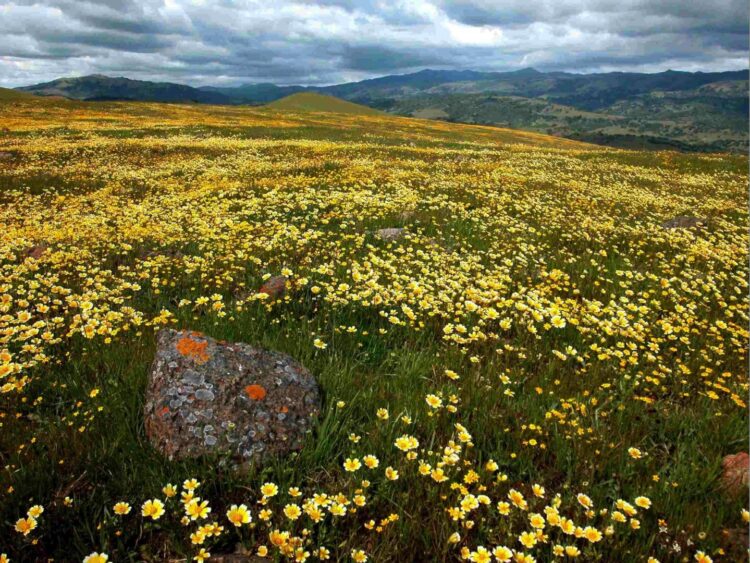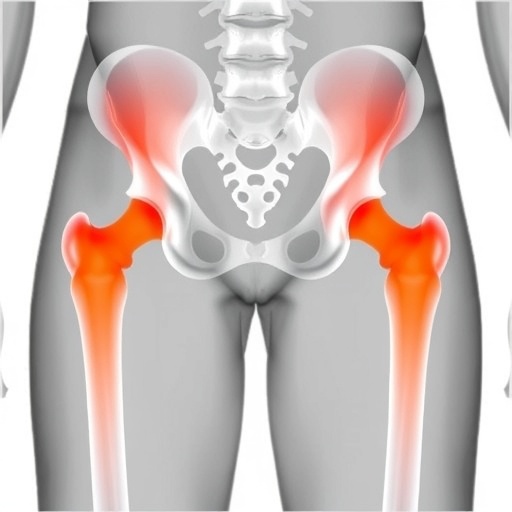The loss of plant species that are especially vulnerable to climate change might lead to bigger problems than previous studies have suggested, according to a new study published in the journal Proceedings of the National Academy of Sciences. If confirmed, the findings can help inform conservation strategies and lead to more accurate predictions about what ecosystems will look like in the future.
The three-year study focused on a grassland near the central coast of California called Coyote Ridge. The researchers are now working on a follow-up study to determine whether the results apply more broadly to other ecosystems around the world.
Species extinctions are known to cause problems for the environment and for humans, such as reducing the water-filtering benefits of a forest or the amount of forage available for cattle in a grassland. To understand the overall effects of lower biodiversity in an ecosystem, ecologists typically conduct field experiments that randomly select species to exclude. But Amelia Wolf, an assistant professor of integrative biology at The University of Texas at Austin, and Erika Zavaleta, a professor of ecology and evolutionary biology at the University of California at Santa Cruz, took a more intentional approach by showing what would happen if the species most likely to be under threat from climate change actually disappeared. It’s a scenario they call realistic species loss.
“From previous experiments, we already know that losing biodiversity can have big impacts on ecosystems,” Wolf said. “When we incorporated more realistic aspects into our study, we found that those impacts were often exacerbated.”
The scientists wondered how the health of a California grassland might change in a future with less biodiversity and a changing climate, in particular in the case of more frequent droughts. They created experimental plots at a site near San Jose that contained a typical mix of native plants, minus those that are sensitive to drought, to determine what would happen if the plants that ecologists expect to be hit hardest by drought actually disappear. To compare how this more realistic approach stacked up to the traditional approach that randomly chooses which species to exclude, they also set up plots nearby using the traditional approach. And then they ran the experiment for three years — during a wet year, a normal year and a drought year.
In many ecosystems, it’s hard to know which species are more or less vulnerable to extinction. In this grassland, the team used a 30-year dataset of plant surveys to determine which species did poorly during drought years, and based their realistic species loss experiment on those data. Wolf and her team found that absent the drought-sensitive plants, the remaining plants in the realistic plots grew less — a result known as lower productivity — than the corresponding plants from the traditional plots with randomized species loss.
Even during drought years, the drought tolerant plants that were left behind in the plots with realistic species loss didn’t grow as big as their counterparts in the more traditional plots.
“We’re building a framework to understand what losing species means,” Zavaleta said. “That gives conservation managers an opportunity to anticipate and to manage ecosystems to preserve certain species and also to mitigate for declines in other species.”
In the experiment, another critical ecosystem function, the ability to resist invasive species, varied widely from year to year. This suggests it’s harder to predict what future ecosystems might look like as climate change continues.
“Variability in ecosystem functioning isn’t necessarily a bad thing,” Zavaleta said. “But it does mean more risk that the system can cross thresholds into a new stable state. For example, you might have heavy rainfall one year, allowing a lot of invasive species to come in and some native species to disappear. Then the next year, when it’s dry again, maybe the system doesn’t snap back.”
The researchers are now working on a follow-up study to see whether the same results apply to other ecosystems.
“I think studies like this can help set conservation priorities and help us predict where things are headed,” Wolf said. “Species have important impacts within an ecosystem, and they have effects that we can quantify — and if some species are gone, ecosystems will change in a quantifiable way. Some of these changes might not be noticeable to most people, but many of these changes are likely to be consequential for humans.”
###
Other authors of the study are Jennifer Funk (University of California at Davis), Paul Selmants (U.S. Geological Survey), Connor Morozumi (Emory University), Daniel Hernández (Carleton College) and Jae Pasari (Portland State University).
This work was supported by the National Science Foundation.
Media Contact
Marc Airhart
[email protected]
Related Journal Article
http://dx.





